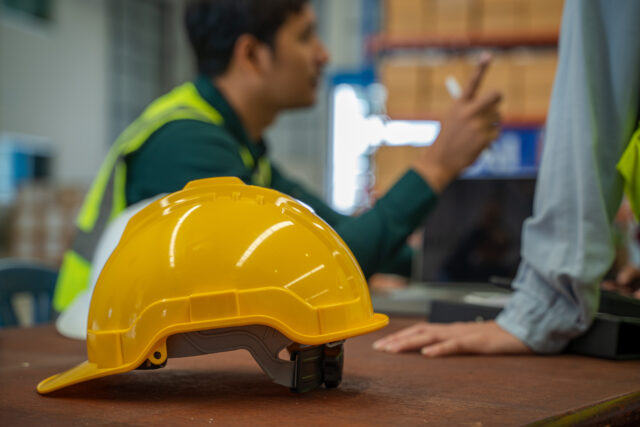Maintaining a safe workplace isn’t just a regulatory requirement — it’s a fundamental business responsibility. In today’s complex operating environments, ensuring compliance with Occupational Safety and Health Administration (OSHA) standards is more critical than ever.
Yet, many facilities continue to face significant safety challenges tied to aging infrastructure, outdated equipment, and changing regulations.
This article explores the evolving safety landscape, the hidden risks of non-compliance, and why upgrading facilities is now an essential strategy for protecting employees, ensuring regulatory adherence, and safeguarding business continuity.
The Modern Workplace Safety Landscape
Workplace safety standards have grown more stringent over the past decade — and for good reason.
According to OSHA, over 4,500 workers die on the job every year in the U.S., and millions more suffer injuries or illnesses that could have been prevented with proper safeguards.
Key drivers behind the evolving safety expectations include:
- Increased focus on worker well-being
- New hazards tied to modern technology, automation, and chemicals
- Tightened regulatory scrutiny and inspection processes
- Higher financial penalties for non-compliance
Facilities today are expected to move beyond “bare minimum compliance” toward proactive, continuous safety improvement.
How Aging Facilities Contribute to Safety Risks
Many workplace safety challenges stem directly from outdated buildings, machinery, and facility layouts that no longer meet modern safety codes or best practices.
Common facility-related risks include:
| Challenge | Safety Impact |
|---|---|
| Outdated electrical systems | Increased risk of fires and electrical injuries |
| Poor indoor air quality | Respiratory illnesses and long-term health effects |
| Inadequate lighting | Higher chances of slips, trips, and falls |
| Non-ergonomic workstations | Musculoskeletal injuries |
| Poor ventilation in hazardous areas | Accumulation of toxic fumes or combustible dust |
| Lack of machine guarding | Serious amputations and crush injuries |
Important: In many cases, these risks persist simply because facilities have not been upgraded to align with current OSHA regulations or industry standards.
Real Costs of Non-Compliance
Failing to meet OSHA standards is expensive — both financially and reputationally.
1. Fines and Penalties
OSHA’s maximum penalty per serious violation is now $16,131 (as of 2024), and up to $161,323 per willful or repeated violation.
Multiple violations can lead to hundreds of thousands — even millions — in cumulative fines.
2. Worker Compensation and Insurance Costs
Workplace injuries trigger higher insurance premiums and potential litigation costs, in addition to compensation payments.
Fact: The average cost of a medically consulted injury in the workplace is approximately $42,000.
3. Productivity and Morale Loss
Injured workers mean:
- Operational disruptions
- Hiring and retraining expenses
- Lower employee morale and trust in leadership
A poor safety culture can also impact recruitment and retention efforts.
4. Reputational Damage
In an age of instant communication, safety violations can quickly become public — damaging your brand, customer confidence, and stakeholder trust.
Common Facility Upgrade Areas to Meet OSHA Standards
Upgrading infrastructure is essential to creating safer work environments and maintaining compliance. Key focus areas include:
Structural and Building Upgrades
- Reinforcing stairways, platforms, and walkways
- Upgrading emergency exits, lighting, and signage
- Improving fire suppression systems
Electrical and Mechanical Upgrades
- Replacing outdated wiring and overloaded circuits
- Upgrading lockout/tagout (LOTO) controls
- Ensuring proper machine guarding and automation safety measures
Air Quality and Environmental Control
- Installing advanced ventilation and air purification systems
- Implementing dust collection and hazardous fume extraction solutions
- Managing temperature and humidity to OSHA-recommended levels
Emergency Preparedness Systems
- Modernizing fire alarms, sprinkler systems, and mass notification systems
- Establishing safe areas and emergency response centers
Ergonomic Improvements
- Installing adjustable workstations
- Providing lifting aids and safer material handling equipment
- Redesigning workflow layouts to reduce repetitive strain
A Strategic Approach: How to Upgrade for OSHA Compliance
Meeting — and exceeding — OSHA standards requires a systematic, proactive approach. Here’s a high-level roadmap:
1. Conduct a Facility Safety Audit
Assess current facility conditions, identify risks, and benchmark against OSHA regulations and industry best practices.
2. Prioritize Risks
Focus on high-risk areas with the greatest potential for serious injury, high fines, or operational disruption.
3. Develop a Phased Upgrade Plan
Implement upgrades systematically, balancing available budget with risk mitigation priorities.
4. Engage Certified Professionals
Work with engineers, OSHA consultants, and safety specialists to design compliant systems and verify improvements.
5. Train Employees Continuously
Upgraded facilities mean nothing without proper employee training on new equipment, systems, and safety protocols.
Real-World Example: OSHA Violations and Facility Upgrades
Case Study:
A food processing plant operating with outdated ammonia-based refrigeration systems faced multiple OSHA violations, including:
- Inadequate ventilation
- Lack of automatic emergency shutdown
- Poorly maintained piping
After investing $2 million in facility upgrades (new ventilation systems, leak detection, and automated emergency controls), the plant:
- Reduced insurance premiums by 18%
- Achieved zero OSHA citations in the next inspection cycle
- Improved worker satisfaction scores by 23%
The payback period on safety upgrades was less than 4 years.
Final Thoughts: Safety Is a Smart Investment
Workplace safety is not a one-time compliance exercise — it’s an ongoing commitment to protecting people and empowering operations.
Upgrading facilities to meet (and exceed) OSHA standards:
✅ Reduces financial risks
✅ Boosts operational resilience
✅ Enhances employee well-being
✅ Improves reputation and brand value
In today’s business landscape, safety excellence isn’t optional — it’s a strategic advantage.
If your facility still relies on outdated systems, the time to act is now. The right infrastructure upgrades can help ensure a safer, smarter, and more compliant future.







